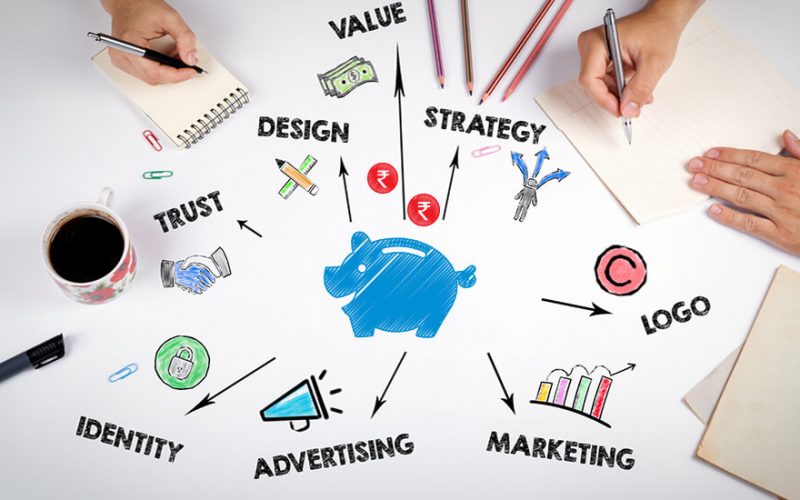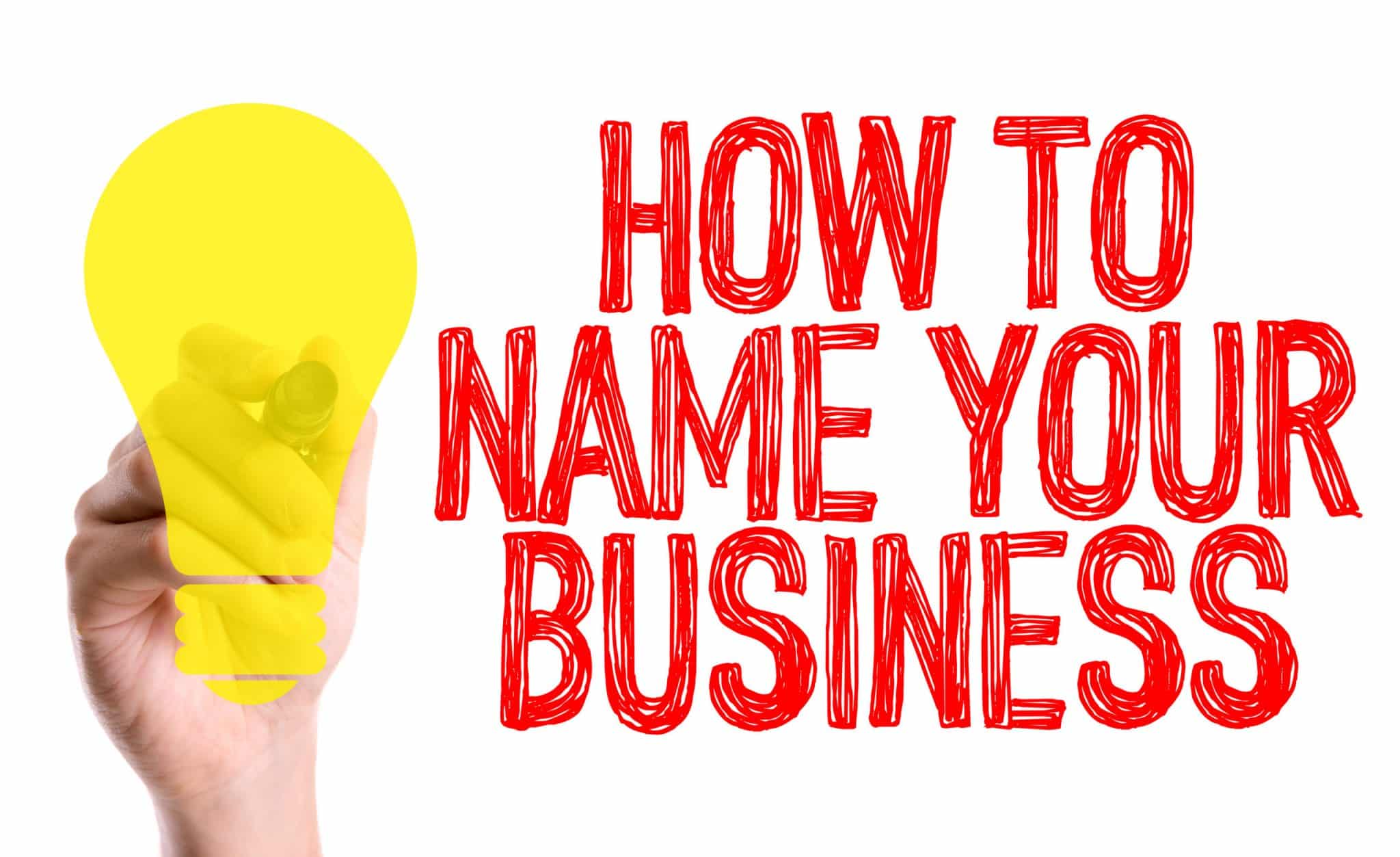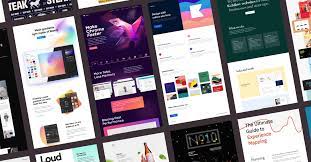Brand development is basically the process of generating and distinguishing your company’s image, products, and services from those of your competitors. Aligning your brand with your strategic business objectives, conveying your brand to your target market, and upgrading or reinforcing your brand as needed are all part of the development process. Brand development is a continuous process, with goals serving as more or fewer benchmarks for new ideas and items as your firm expands. As a result, as the culture develops and you reach new audiences, your strategy may vary over time. We’ll look at how to create a brand development strategy that tells your narrative and builds customer loyalty in the sections below.
What is a Brand?
Your firm’s reputation and presence in the marketplace are the biggest definitions of a professional services brand. Reputation X Visibility is a formula for determining the strength of your brand.
There’s another aspect of your brand to consider: how relevant it is to your target client base. That will be discussed later.
Read Also: 7 SMALL BUSINESS BRANDING IDEAS THAT WILL YIELD YOU MORE PROFIT
What is Brand Development?
This is the process of building and strengthening your professional services brand. We divide the process into three phases when assisting businesses with brand development.
The first step is to ensure that your brand strategy is right and linked with your business goals.
The second step is to create all of the tools you’ll need to communicate your brand, including a logo, tagline, and website.
Finally, you’ll need to enhance your newly created or revised brand.
How you go about completing these tasks is determined by your brand development strategy.
What Makes a Brand Development Strategy Successful?
An effective branding strategy’s fundamental goal is to let the world know that your brand exists, what it stands for, and what defines it. A branding strategy is a fluid, long-term approach that must be reassessed based on its success over time (or lack thereof).
However, a brand development strategy’s success isn’t always straightforward to assess. When it comes to branding initiatives, intangible, difficult-to-quantify features are common, therefore it’s critical to define how success will be measured from the start.
For the most part, every organization takes a different approach to measure success, but all will incorporate the same aspects in their strategy. The first stage in developing an effective brand strategy is to answer the following questions:
Read Also: Store branding Guide: Retail Store Branding Ideas
What are the goals of your brand, and how do you communicate them? – What challenges will your brand address, and how will it help your target market?
How do you figure out who your ideal clients are?— Who will the brand benefit from? How do these customers feel now, and how do they want to feel in the future?
How do you find out who your competitors are and how they are providing what your potential customers want?
What methods do you use to engage potential customers? — To fulfill its objectives, what personality and tone of voice would your brand need?
Steps for Brand Development Strategies
The ensuing paragraphs cover steps you should follow for an effective brand development strategy.
Brand Market Research: Where to Begin
Basically, you’d learn what drives the value of your brand by conducting significant market research. At this point, you’re asking, “What do consumers want, and how can we offer it?” instead of “How can we apply the product or service we have?” More importantly, you’re figuring out how to engage with customers in a unique and relevant way.
So, asking essential questions to ensure that your brand strategy aligns with your business objectives could be a good place to start your research. The following are examples of possible questions:
- Who is your ideal customer?
- What effect do you have on your customers?
- Why do your customers have faith in you?
- What sets you company apart from the competition?
- Who are your main rivals?
- What are the benefits you provide to the market?
- What consumer pain points do you address?
- Do you or your business have a distinct personality?
In addition to the above questions, you may want to look into issues with your current brand identity as well as ways to make it more simple. Finally, what is your backstory? What kind of story do you want to tell your customers?
Read Also: Writing a brand story the right way. (Detailed guide)
Determine Who You Want to Reach
A target market is a specific group of people you want your brand message to reach. This is the group that is most likely to purchase your goods or services. These individuals share common traits that make them naturally drawn to your brand. The more precisely you can define your target market, the easier it will be to create a brand development strategy/strategies that resonate with them.
There are several strategies you can use to reach your target audience once you’ve defined your group. These strategies could include the following:
#1. Creating Content That Is Both Useful and Relevant
Your target audience’s interest in your products or services will be determined by how you communicate with them. Whether you’re using digital platforms or marketing collateral, ensure the information you’re offering is relevant, engaging, and appealing. Plus, to reach as many people as possible, use a variety of platforms.
#2. Make use of Targeted Marketing
Identifying your target market and the best strategy to reach them will be a part of your research. Online platforms offer a variety of tools for fine-tuning your marketing initiatives, while marketing companies can assist you with print and conventional marketing to reach your target demographic.
#3. Get Feedback from Customers
Asking customers directly may be the most effective approach to learn what they want. You can obtain meaningful client feedback in a variety of ways, including surveys, polls, and questionnaires. Consumer feedback can help you fine-tune your brand identity and messaging to better connect with your target audience.
#4. Messaging And Brand Positioning
Brand positioning allows you to stand out in the marketplace. You can use positioning to determine how your brand differs from the competitors. Basically, a successful marketing plan is developing a brand that will appeal to a specific group of people. Furthermore, consumer loyalty and your company’s market equity are inextricably related to brand positioning.
You must next follow up with a brand statement or message that consumers understand, that your firm can provide, and that sets you apart from your competition.
Developing a Key Message
You can communicate your brand with a clear and succinct message if you have a strong understanding of your market/brand position. Key differentiators and the value of each differentiator will be included in your messaging.
Your message will also be condensed into a single slogan that encapsulates all your firm stands for. The tagline is backed up by an “elevator pitch” that is easy to understand, expresses your brand, and sticks in viewers’ minds. Your message should be persuasive enough to motivate people to take action and turn them into devoted consumers. It should also include information about your company’s history, who it serves, how it solves problems, and its culture.
Create Mission and Vision Statements
Next, you’ll need to create a clear expression of your company’s core values.
This is your reason for existing; the reason you get up every day.
You must first understand the value your company delivers before you can establish a brand that your target audience will trust.
Your brand vision is an ambitious statement for the future that your company strives to achieve.
Consider a 10-year prediction of where your brand wants to go, who it wants to be, and what impact it will have on the environment you’re in.
The mission statement is a now, everyday declaration of commitment that serves as a road map for achieving your goals. It will guide you in the execution of your brand-development strategy/ strategies.
Your goal and vision should be reflected in everything you do, from your logo to your tagline, voice, message, and personality.
Brand Development Strategy Example
Nike is a good example of this brand development strategy.
We’ve all heard Nike’s slogan: “Just Do It.” But do you know what their mission is?
"To deliver inspiration and innovation to every athlete in the world."
The Nike mission is visible everywhere. They focus on athletes of all types who use Nike items to help them be their best selves.
Nike takes its marketing objective even further by including a footnote: “If you have a body, you are an athlete.” Consider how broad their target audience gets with such a declaration!
The corporation has established such a strong brand and reputation that it may increase the target to accommodate any “body.”
Read Also: NIKE LOGO: The Story Behind Great Branding!!!
Start modestly when branding your company and remember to concentrate on your specific audience first.
Your brand loyalty may build to the point where you can broaden your reach over time.
For a moment, let’s take a step back. Before you write your brand’s vision or mission statement, make sure you’ve completed the previous step of defining who your target audience is. It’s one of the most crucial elements in the brand development process and strategy.
Outline the Key Qualities & Benefits Your Brand Offers
For starters, building a memorable brand requires digging deep to discover what you offer that no one else does. Concentrate on the characteristics and benefits that distinguish your company’s branding.
Give them a reason to choose your brand over another, assuming you know who your target demographic is.
It’s vital to remember that this isn’t just a list of benefits your product or service provides to the customer or client. Consider how you can provide value to your customers’ lives (outcomes or results that are experienced).
Listed below are a few examples:
- Genuine and Transparent customer service
- A more effective technique to boost productivity
- Lowering costs by choosing a less expensive option
- Getting more done in less time
- Discover how to develop your value propositions.
Apple is an excellent example
Apple is clearly not just another computer manufacturer. A clean design is one of their best features, and ease of usage is another.
Apple always reminds buyers that their products can be utilized immediately out of the box, from their unique packaging to their introduction events.
Do you recall Apple’s motto from 1997 to 2002? “Think Different” was the theme. This idea is still alive and well today.
Develop Your Own Brand Voice
Your tone is determined by the mission, audience, and industry of your firm.
It’s all about how you interact with your customers and how they react to you.
The following is an example of a brand voice:
- Professional
- Friendly
- Service-oriented
- Authoritative
- Technical
- Promotional
- Conversational
- Informative
There are a plethora of descriptors and choices for creating a brand voice to support your messaging.
Finally, you want to pick a brand voice that makes sense and is appealing to your target audience.
You’ll notice that finding and using the right brand voice gives you the best chance of interacting with customers.
This is especially crucial when writing blog posts or posting on social media. Maintaining a consistent voice will help your brand image be recognized in the same way across several mediums. When your followers, readers, or subscribers consume your content, they will grow to expect a specific brand voice and personality.
Virgin America is a good example
Virgin America is known for its courteous and dependable customer service, and its voice helps to reinforce that reputation.
On Twitter, take note of their friendly demeanor, which in this case includes location-based comedy. They also emphasize the value they provide to their consumers by ensuring that every flight has power outlets.
Allow your Brand’s Individuality Shine Through
Customers aren’t searching for yet another cookie-cutter business that provides the same services as everyone else.
They want an experience that is personalized to their specific demands and backed up by true personal engagement.
However, direct marketing is the source of this information. Maintain this brand identity at all points of contact.
It might be as easy as:
- Using a conversational voice (such as “I” and “you”) in communication,
- Sharing content from behind-the-scenes
- Using real-life experiences to tell stories
- Using a unique approach to describe your products or services
- Make your individuality shine through in all aspects of your brand image creation.
Create a Brand Narrative and Messaging
When developing a brand, tell customers who you are in a few words. Make use of the brand’s designated corporate voice. Your messaging should be closely linked to your brand and delivered in a consistent manner.
This step of the brand development process goes beyond the logo and tagline to define the important aspects of:
- Who are you?
- What you have to offer
- Why should people be concerned?
Furthermore, a brand story is an opportunity to communicate on a human level with your customers, allowing you to make a direct emotional connection.
This means that the tone you employ should be readily understandable while also striking an emotional connection.
Make it simple and straightforward.
Most importantly, while establishing a brand story, focus on why your product is important to your buyer rather than what it can do.
TOMS Shoes is a great example
TOMS Shoes has amassed a sizable social media following and an overwhelmingly good brand image.
On their website, they state explicitly what their message is: “Improving lives.” This story is told every moment that a customer interacts with the brand.
A brand message is an opportunity to speak on a human level with your customers, allowing you to make a direct emotional connection.
Design a Logo and Tagline for your Business
Visuals are typically the first thing that comes to mind when considering brand development. This is the step when you may require assistance with innovative execution.
Creating a brand logo and tagline for your firm is the most fun (and certainly the most crucial) part of the branding process.
This logo will appear on everything that has anything to do with your business. It will serve as your identity, business card, and visual representation of your commitment.
So be willing to put in the time and money to create something special to strengthen your company’s visual identity.
However, if you need assistance with your company’s branding? To help your company stand out, hire a professional designer or branding firm with experience in logo and identity design.
Their experience will ensure that you get a one-of-a-kind and everlasting logo for your company.
A designer can also create brand guidelines to ensure that the logo and its accompanying color palette and typefaces are used consistently in the future.
Also, you can try using online logo design tools like Logaster. You just have to enter a brand name and in a few seconds, you will get a result.
Read Also: STARBUCKS LOGO: Evolution, Significance, Branding Models & Tips
The following items will be included in a strong brand style guide:
- Size and positioning of the logo
- Color scheme
- Fonts and typography
- Iconography
- Style of photography/image
- Elements of the web
Incorporate Your Brand Into All Aspects of Your Company
The process of brand development never ends. Your brand should be visible and audible in everything your customer sees, reads, or hears.
Allow me explain…
When a client or a customer walks into your office or shop, your brand image should be visible both in the environment and in personal interactions.
Your logo should appear on everything tangible, including business cards, advertisements, packaging, and products. If you don’t know how to incorporate your logo perfectly with your packaging, you can reach out to companies like Zenpack. They can design everything from scratch and capitalize on the opportunity to make a strong impression with the strategic, brand-aligned package design.
Ensure that your brand is consistent across all digital platforms. Use your brand style guide to ensure visual consistency, such as color and logo usage, fonts, and photography.
However, the most important tool for marketing your brand is your website. So, incorporate your voice, message, and personality into the content when designing your website.
Also, for maximum engagement, social media profile pages should be branded visually and with your unique voice.
Read Also: Social Media Marketing Tips: Top 29+ Tips for Small Businesses
Don't forget about videos as well! YouTube, Facebook Video and Facebook Live, Snapchat, and Instagram Stories are all platforms that require content that reflects your brand's personality and voice. If you're going to start a podcast, stick to a theme that supports your brand's message, value, and voice.
Warby Parker is a Good Example
Warby Parker has quickly established itself as a one-of-a-kind and best-in-class brand. Their cutting-edge product home try-on experience, retail setting, and digital content marketing activities are all precisely adapted to the target audience’s lifestyle.
Everything your customer sees (and doesn’t see) should represent and reflect your brand.
Maintain your Brand’s Integrity
Consistency is essential unless you decide to transform your brand into something more effective based on measurable consumer response. Whenever you need to make a decision on your brand’s identity or marketing, go back to your Brand Strategy.
Once you’ve established a brand voice, make sure to employ it in all of your material.
All of the brand standards you design should be documented and distributed internally for reference.
What good is brand development if it isn’t done consistently? So try to avoid modifying your branding at any slight opportunity. Customers will get confused by the inconsistency, which will make long-term brand growth and development more difficult.
Starbucks is a Good Example
Starbucks is the world’s largest specialty coffee store, and its mission has always been to unite people.
What exactly is Starbucks’ mission?
“One person, one cup, and one neighborhood at a time, to inspire and nurture the human spirit.”
That’s why you’ll find free Wi-Fi, spacious tables, and relaxing music in every store to make conversing with others a flurry. Hence, to add a personal touch, they always write your name on your coffee.
Read Also: STARBUCKS LOGO: Evolution, Significance, Branding Models & Tips
Despite a logo update in 2011 (which removed the company name! ), the Starbucks brand is still well-known. What do you think when you see that basic green mermaid logo? I’m certain it’s something.
Personal Brand Development
On the other hand, personal brand development is a critical factor in a professional setting. As the job market becomes more competitive, the concept of personal branding has gained traction in recent years. Fundamentally, with the internet’s pervasiveness and the rise of social networking sites, it’s become indispensable for any professional with an online presence to mold and manage their personal brand.
But what does it mean to have a personal brand?
Essentially, it’s a means for people to learn more about you, including your professional ethos, goals, and mission. We’ve all heard of celebrities who have built a personal brand.
More valid reasons why you should consider implementing a personal brand development strategy are encapsulated in subsequent paragraphs
Why is a Personal Brand Development Strategy Vital?
Personal branding is a representation of you that people see when they search for you online, as well as the image you choose to project in face-to-face interactions.
Whether we realize it or not, our online demeanors — whether on LinkedIn, Facebook, Twitter, or other social media platforms – establish a searchable online personal profile. Employers and recruiters are now using the internet to do job background checks and get a sense of their potential employees’ character and interests. Employers are less inclined to interview a candidate they can’t find online, according to the statistics.
So, rather than it happening by accident, intentionally developing a personal brand for yourself allows you to have a voice in how you promote yourself and offers you control over crafting an authentic picture of your identity.
While social networking sites are mostly used to interact with others in a social setting, they may also be used to start creating your personal brand.
How to Create and Develop Your Own Personal Brand
Your personal brand should be built in such a way that it can be simply stated in an online environment, as well as orally and through actions and behaviors.
Because you’ll be ‘living and breathing’ your personal brand, it’s critical that it’s authentic and true to who you are.
To create a personal brand, follow these steps:
Figure Out What You’re Really Interested In
Your personal brand should represent and coincide with your likes and hobbies. What do you wish to do, and what characteristics and qualities reflect your enthusiasm? Market yourself as someone with public speaking skills and ambition in your field of expertise if you want to be a professional speaker.
Increase Your Social Media Presence
On social networking sites, create profiles that represent your interests. It’s critical to optimize your LinkedIn profile to reflect your interests, talents, and goals. If you use Facebook and Twitter, on the other hand, make sure your profile and the information you provide on those platforms are consistent with your personal brand’s overall tone and message.
Create a Strategy for Yourself
What are your plans for your own brand? You should construct a development path for yourself that leverages and buoys your personal brand, just like any commercial or corporate brand has objectives, goals, and ambitions. Begin to make contacts, make decisions, and plan career moves that are consistent with your brand.
Tell a Story
The narrative is one of the most effective strategies to develop a captivating personal brand. It’s simple to express who you are and what you do professionally, but a dull description of yourself will not help you stand out from the crowd.
Consider what makes your narrative unique: did you take a circuitous route to get to where you are now? Has your career taken any unexpected turns? How have your life experiences influenced your career decisions? Your personal brand will be more compelling if you can bring more color to your story.
If you’re looking for a raise or changing jobs or careers, developing a personal brand is especially vital.
You can obtain a clearer picture of what you want to achieve and how you need to be viewed to achieve it by building a brand for yourself, and then advertising those attributes to your target audience.
What Is Brand Development With Example?
Brand development is basically the process of generating and distinguishing your company’s image, products, and services from those of your competitors. Major examples of brand development strategies can be found in companies like Nike, Starbucks, Netflix, and so on.
What Are the 4 Steps of Branding?
Amongst several steps of branding the most prominent 4 includes;
- Carrying out your market research
- Defining your target audience
- Positioning your business
- Logo and Tagline creation; amongst others.
What Is Brand Strategy Development?
A brand strategy development is a plan that aids the process of generating and distinguishing a business’s products and services from its competition.
What Are the Stages of Brand Development?
The brand process is made up of seven basic steps: building the brand team, analyzing the business, analyzing the audience, positioning the brand, coming up with creative and messaging, putting the plan into action, keeping it up to date, and measuring its success.
What Are the 3 C’s of Branding?
Follow the 3 Cs model of brand messaging to make sure that your brand’s message and values are clear: consistency, clarity, and character.






